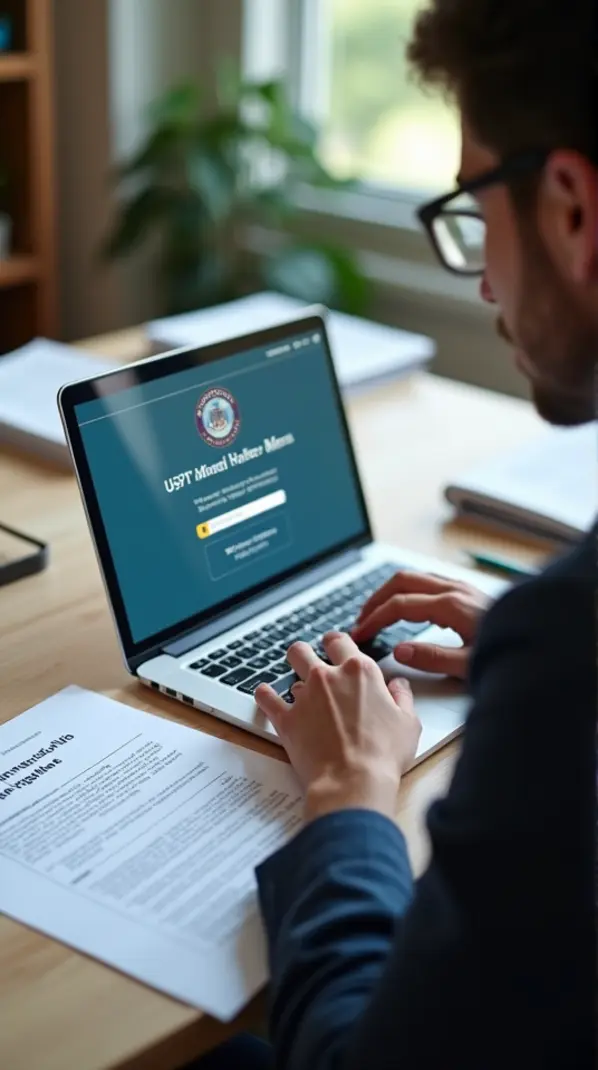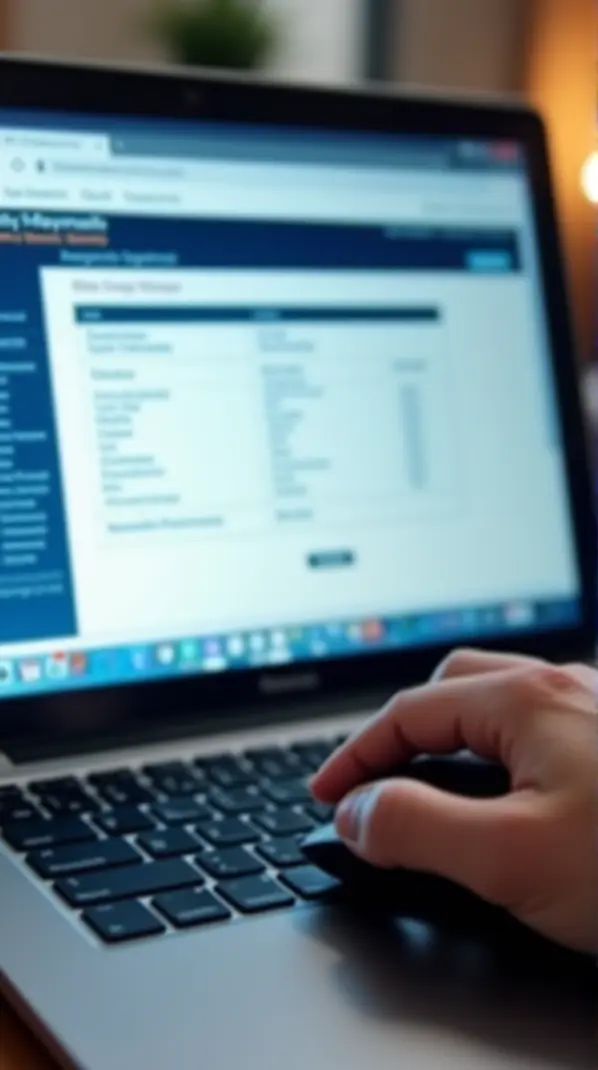Introduction
Securing a trademark is a crucial step for any business looking to protect its brand identity. While some business owners choose to file for a trademark themselves to save costs, others seek affordable yet effective legal services to avoid common pitfalls. This article explores how businesses can navigate trademark registration on a budget, highlighting the roles of solo practitioners, small firms, and the USPTO Trademark Electronic Application System. Each chapter delves into critical aspects that can help business owners make informed decisions on trademark filing, balancing cost with the expertise required to ensure a successful registration.
Tables of Contents
Chapter 1: Navigating the Complexities of DIY Trademark Filing and its Costs
- Deciphering Trademark Filing Fees: Understanding Costs in the DIY Process
- The Crucial Role of Trademark Searches in Cost-Effective DIY Filing
- Achieving Precision: The Importance of Application Accuracy in DIY Filings
- Sustaining Your Trademark: Maintenance and Protection Strategies
- Navigating the Legal Labyrinth: Complexity and Risks in DIY Trademark Filing
- Cost Factors in DIY Trademark Filing: A Deeper Dive into Fees and Savings
Chapter 2: Role of Affordable Solo Practitioners and Small Firms
- Balancing Cost and Expertise: Solo Practitioners in Trademark Law
- Localized and Specialized Approach: The Hallmark of Affordable Solo Practitioners
- Smart Technology Integration: Elevating Solo and Small Firm Efficiency
- Innovative Marketing Strategies for Solo Legal Practices
- Flexible and Tailored Service: The Edge of Solo Practitioners and Small Firms
- Gaining a Competitive Edge Through Cost-Effective Practices
Chapter 3: Balancing Costs with Trademark Attorney Expertise
- Navigating the Balance: Evaluating Trademark Attorney Fees for Optimal Expertise
- Proactive Legal Counsel: Investing in Savings and Security
- Unlocking Cost Efficiency: The Role of Local Counsel in Strategic Trademark Filing
- Predictable Legal Support: Leveraging Monthly Retainer Packages with Trademark Attorneys
- Strategic Collaboration for Cost-Effective Trademark Protection
- Navigating International Trademark Filings with Cost-Effective Strategies
Chapter 4: Effective Strategies for Low Cost Trademark Registration
- Mastering the DIY Path: Essential Steps for Low-Cost Trademark Filing
- Maximizing Value: Online Legal Services for Affordable Trademark Registration
- Opting for Small Firms: Strategic Choices in Cost-Effective Trademark Registration
- State or Federal: Crafting a Cost-Effective Trademark Strategy
- Structuring Business Entities for Cost-Effective Trademark Strategies
- Streamlining International Trademark Protection with the Madrid Protocol
Chapter 5: Evaluating the Risks and Benefits of DIY vs Attorney-led Filing
- The Balancing Act: Weighing Legal Consequences in DIY and Attorney-led Approaches
- Financial Dynamics: Weighing DIY and Attorney-led Trademark Filing Costs
- Navigating Legal Complexity: When to Opt for DIY or Attorney Assistance in Filing
- Ensuring Compliance and Accuracy: The Importance of Professional Guidance in Trademark Filing
- Understanding the Financial Dynamics: DIY vs Attorney-led Trademark Filing
- Navigating Future Peace: The Role of Expert Guidance in Trademark Filings
Chapter 6: Unlocking the Potential of the USPTO Electronic System for Affordable Trademark Filing
- Navigating TEAS Plus: A Streamlined Path to Cost-Effective Trademark Registration
- Harnessing Pre-Approved Descriptions: A Frugal Approach to Trademark Filing
- Maximizing Cost Efficiency with TEAS Plus and TEAS Standard
- Mastering USPTO Fees and Requirements for Budget-Friendly Trademark Filing
- Navigating the Self-Filing Landscape: Weighing Risks and Rewards with or without Legal Aid
- Navigating TEAS Plus for Maximum Trademark Filing Savings
Chapter 1: Navigating the Complexities of DIY Trademark Filing and its Costs

1. Deciphering Trademark Filing Fees: Understanding Costs in the DIY Process
Understanding Trademark Filing Fees
Embarking on a DIY trademark filing journey necessitates grappling with various fee structures. The USPTO charges between $250 and $350 per class based on your chosen form; TEAS Plus is the budget-friendly option at $250 per class. Yet, these federal fees may multiply depending on the number of goods or services classes involved. Beyond federal, state-level filings offer more frugality, ranging from $15 to $125 each, although they confine protection to state lines. Additional charges, like the $125 per class for extended response deadlines to USPTO requests, can unexpectedly elevate costs. For those wary of missteps, hiring trademark attorneys, although pricier (up to $2,500), often proves prudent to streamline the process. Online legal services offer a middle ground, with firms charging a flat rate plus federal fees. Ultimately, understanding these layers of fees not only saves money but also mitigates filing risks, ensuring your trademark aspirations remain both cost-effective and secure. Explore more details on state-specific filing instances here.
2. The Crucial Role of Trademark Searches in Cost-Effective DIY Filing
Embarking on a DIY trademark application journey without a thorough search is akin to navigating uncharted waters without a map. Conducting a comprehensive trademark search is imperative for ensuring your mark’s distinctiveness and protectability. A successful search guards against legal entanglements by verifying that your desired trademark isn’t already in use, effectively reducing the risk of application refusals, brand confusion, and potentially costly disputes. Beyond basic checks for exact matches, one must delve into broader search tactics, exploring the USPTO databases and wider commercial landscapes to identify any hidden conflicts. Ignoring this step could be financially detrimental, with applicants risking fees on doomed applications due to existing similar marks or unintentional infringement. While DIY filing minimizes initial costs, strategic investment in comprehensive trademark searches, supported by cost-effective legal counsel when necessary, can provide substantial long-term savings. To delve into the strategic value of conducting trademark searches, visit jdsupra.com.
3. Achieving Precision: The Importance of Application Accuracy in DIY Filings
In the realm of DIY trademark filing, application accuracy stands as both a cornerstone and a potential stumbling block. Ensuring precision when selecting between TEAS Plus or TEAS Standard forms is vital. Each form offers unique advantages; TEAS Plus is more cost-effective at $250 per class, yet demands more meticulous descriptions, while TEAS Standard provides flexibility at $350 per class. The nuances of these selections cannot be overstated; choosing incorrectly could lead to costly errors and delays. Beyond form selection, the clarity in goods or service descriptions, and the meticulousness in determining classifications, follow the Nice Classification system. These steps are imperative not only for successful approval but also for avoiding Office Actions—official refusals that, if mismanaged, may jeopardize the entire process. Conducting a thorough trademark search before filing can prevent conflicts, thus safeguarding your investment. Post-registration, ongoing monitoring services (~$199/year) ensure continued protection against infringement, a cost-effective strategy for the vigilant business owner. For those navigating this intricate process, resources like Rocket Lawyer’s guide can provide invaluable support, helping you minimize errors while keeping costs in check.
4. Sustaining Your Trademark: Maintenance and Protection Strategies
Maintaining a DIY trademark involves periodic fees and strategic oversight to protect its validity. After registration, trademark holders must pay renewal fees, approximately $225 to $525 per class, at five-year and ten-year intervals via Section 8 and Section 9 declarations. Failing to comply with these deadlines can result in the forfeiture of trademark rights. Beyond ensuring continuity through timely payments, effective trademark protection requires diligent monitoring. Services that identify potential infringements or conflicting marks cost around $199 per year, supporting proactive brand defense. Regular audits of usage, documentation, and licensing agreements are vital for ongoing enforcement. Implementing trademark watch services can also serve as a strategic shield against competitors’ filings, balancing operational costs with enduring brand security.
Financially, proper tracking of trademark-related expenses can offer tax benefits. While initial registration costs are amortized, ongoing maintenance, renewal, and defense fees may be deductible as business expenses in the year they are incurred. Utilizing financial tracking tools simplifies this process, ensuring that you capitalize on potential deductions and maintain accurate records. Engaging legal expertise, perhaps from a solo attorney or small firm offering flat-rate packages—like those tailored for startups and small businesses—can further simplify management and safeguard trademarks. For more insights into successful trademark filing practices, explore this page on registering a trademark in Georgia.
5. Navigating the Legal Labyrinth: Complexity and Risks in DIY Trademark Filing
DIY trademark filing promises cost savings, but it comes with inherent legal complexities and risks. Missteps can lead to expensive corrections and jeopardize trademark rights. Major challenges include accurately classifying goods/services and avoiding application errors. Without expert guidance from affordable attorneys, these risks increase. The USPTO Trademark Electronic Application System (TEAS) can help understand filing fees and processes. Weighing the long-term impact against initial cost savings is crucial for informed decision-making.
6. Cost Factors in DIY Trademark Filing: A Deeper Dive into Fees and Savings
Understanding the cost implications of DIY trademark filing involves evaluating the USPTO fees, which range from $250 to $350 per class. Each additional class of goods or services, such as an expansion from clothing to consulting, requires its own fee. Moreover, while filing online via TEAS is the most budget-friendly, paper filing escalates costs to $850. DIY applicants must also consider potential extensions, office actions, or Statements of Use fees. Although this route minimizes initial costs, applicants must meticulously manage every detail to avoid costly missteps. For some, investing in legal consultations is a worthwhile trade-off, providing expert navigation through complexities and reducing risks over time. Comprehensive resources like Trademark a Logo – LegalZoom offer invaluable guidance.
Chapter 2: Role of Affordable Solo Practitioners and Small Firms

1. Balancing Cost and Expertise: Solo Practitioners in Trademark Law
Affordable solo practitioners and small firms are pivotal in making trademark legal services accessible and budget-friendly. By operating with lower overhead, these legal professionals offer competitive pricing without compromising expertise. Their nimble structures allow them to address niche markets, often delivering more personalized and flexible services, which larger firms might overlook. Moreover, such practitioners harness cost-effective digital marketing strategies to broaden their reach without substantial advertising budgets. Technology integration further enhances their service delivery; using management software, they streamline operations, thus maintaining low costs while delivering high-quality service. This combination of affordability, accessibility, and innovation effectively bridges the gap between DIY filing attempts and the costlier alternatives of large firms. For those seeking low-cost trademark assistance, consulting with affordable solo practitioners or small firms can be a smart strategy to safeguard trademarks without the financial strain typically associated with more extensive legal services. For managing finances in solo law firms, consult AccessLex Resource.
2. Localized and Specialized Approach: The Hallmark of Affordable Solo Practitioners
Affordable solo practitioners and small law firms excel through a focused approach to niche legal services within their communities. They employ local SEO tactics and specialize in areas like family or real estate law, ensuring cost-effective client outreach. Their preference for virtual assistants over legal outsourcing reflects a commitment to personalized client relationships. Business structures like LLCs offer flexibility and protection suited to their scale. This strategy contrasts with larger firms that rely on broader marketing and extensive resources to capture a wider client base.
3. Smart Technology Integration: Elevating Solo and Small Firm Efficiency
In the competitive world of legal services, affordable solo practitioners and small firms have ingeniously integrated technology to streamline operations while maintaining a budget. By adopting AI-powered legal software and client portals, they efficiently automate routine tasks such as document generation and client follow-ups. AI assistants further enhance this by expediting legal research and verifying citations, allowing small firms to rival the efficiency of larger practices without adding extra staff. The implementation of practice management systems tailored for small operations enables seamless scheduling and client communication, increasing responsiveness and satisfaction. This technological edge not only boosts productivity but also ensures the delivery of precise legal services. For more insights on these practices, you can visit Assembly Software’s blog on law firm technology use.
4. Innovative Marketing Strategies for Solo Legal Practices
In the competitive landscape of legal services, affordable solo practitioners and small firms must leverage targeted marketing strategies. Building a robust online presence by maintaining a user-friendly website and optimizing a Google Business Profile for local SEO is fundamental. Social media engagement on LinkedIn, Facebook, Instagram, and TikTok allows practitioners to share educational content and client testimonials, which helps humanize the practice. Referral networks are invaluable; collaborating with professionals such as accountants, realtors, and doctors can bolster word-of-mouth referrals, a highly trusted form of marketing.
Content marketing, through blogs, webinars, and legal guides, positions the practitioner as an authority and valuable resource, fostering trust and ongoing relationships. Email and SMS campaigns further nurture leads and maintain client communication, while budget-friendly advertising like Google Ads and PPC campaigns can precisely target potential clients. Utilizing free directory listings on platforms like Avvo, FindLaw, and Justia enhances online visibility without additional costs. By integrating these strategies, solo and small legal firms can effectively reach more clients and build a sustainable practice without overreliance on expensive marketing tactics. For more insights on legal services marketing, IndoorMedia offers valuable resources.
5. Flexible and Tailored Service: The Edge of Solo Practitioners and Small Firms
Adaptability and personalized service define affordable solo practitioners and small firms, offering flexible, client-focused care beyond the scope of larger organizations. Solo practitioners embrace adaptable schedules and minimize administrative burdens, allowing for dedicated client interaction. This flexibility extends to customized service packages, enabling more efficient budget use and maximizing returns on investment. Close client communication fosters trust and better legal outcomes. Solo professionals’ streamlined decision-making enhances responsiveness and adaptation, while balancing professional demands maintains a sustainable workflow. These attributes make smaller firms an attractive choice for businesses navigating trademark registrations efficiently and economically. For further assistance, explore more here.
6. Gaining a Competitive Edge Through Cost-Effective Practices
Affordable solo practitioners and small law firms excel at delivering cost-effective legal services through strategic measures like minimizing overhead and embracing technology. By avoiding hefty office rents and staffing expenses, they reduce operational costs significantly. The use of cloud-based platforms enhances administrative efficiency, cutting down time spent on non-billable tasks by up to 40%. Tools offering integrated billing and file sharing bolster client communication and support remote work, further containing expenses. Additionally, targeted digital marketing allows these firms to reach potential clients efficiently, competing effectively without large budgets. Access to co-working spaces and virtual office services also contributes to their flexible infrastructure, supporting professional operations at a fraction of traditional costs. These approaches enable solo practitioners and small firms to offer personalized, high-quality services that are both affordable and effective, positioning them as formidable competitors against larger establishments. For more insights, explore trademark registration processes.
Chapter 3: Balancing Costs with Trademark Attorney Expertise

1. Navigating the Balance: Evaluating Trademark Attorney Fees for Optimal Expertise
Trademark attorney fees, ranging from hundreds to thousands of dollars per class, reflect the balance between cost and expertise in trademark processes. Scope of services affects costs; basic application assistance may cost between $750 and $2,400 per class, while more complex tasks like handling oppositions increase expenses. Expertise mitigates risks, potentially saving long-term costs despite higher upfront fees. Attorneys’ deep knowledge reduces the chances of refusals requiring expensive litigation or re-filing. Cost structures vary; some attorneys offer monthly legal packages, potentially cost-effective for businesses with complex needs. When considering trademark attorney fees, it’s essential to weigh upfront costs against the potential for reducing risks and achieving better outcomes, making experienced legal counsel a worthy investment. Learn more about trademark costs and filing fees.
2. Proactive Legal Counsel: Investing in Savings and Security
Proactive legal counsel from trademark attorneys stands as a resource-saving strategy. By engaging experienced legal professionals early, businesses can avoid costly disputes and enhance brand protection with strategic plans. Expert advice minimizes errors, reducing expensive enforcement actions and preserving brand value. Learn more about simple, cost-effective trademark registrations.
3. Unlocking Cost Efficiency: The Role of Local Counsel in Strategic Trademark Filing
When balancing costs with trademark attorney expertise, leveraging local counsel can be a strategic move. Their jurisdiction-specific insights help prevent costly procedural missteps, particularly in multi-jurisdictional enforcement. By offering compliance knowledge with local laws and procedures, local counsel augments the wider expertise of trademark attorneys who focus on complex legal strategies and infringement defenses. This collaboration is particularly beneficial for businesses navigating intricate landscapes, allowing effective cost management through precise budget delineation and alternative fee arrangements. This cost-effective synergy optimizes trademark protection, reducing risks and enhancing strategic enforcement. For more insights on managing international trademark rights, visit aaronhall.com.
4. Predictable Legal Support: Leveraging Monthly Retainer Packages with Trademark Attorneys
Utilizing monthly retainer packages offers businesses a harmonious blend of budget management and expert legal service in trademark protection. By engaging attorneys through a consistent monthly fee, businesses secure ongoing access to a suite of services, including trademark monitoring and consultation, while avoiding unexpected legal costs.
Retainers provide cost predictability, with fees covering routine tasks and potential rollovers for future needs, catering to the evolving requirements of trademark management. The flexibility of fee structures—whether as security retainers or general retainers—ensures that legal services align with clients’ financial expectations and attorneys’ resource allocation.
This strategic approach encourages collaboration, fostering proactive trademark management and potentially minimizing disputes. For more insights into retainer fee structures in intellectual property contexts, explore Rhema Law Group’s detailed explanation.
5. Strategic Collaboration for Cost-Effective Trademark Protection
Balancing costs with trademark attorney expertise can significantly decrease the likelihood of expensive litigation. This involves conducting comprehensive trademark searches, selecting strong trademarks, and engaging attorneys early on. These strategies, coupled with maintaining usage records and monitoring competitors, form a proactive approach. Attorneys provide invaluable assistance in navigating complex laws, advising on registration strategies, and enforcing rights. Regular updates and coordination between legal and business teams also aid in safeguarding your brand. Consider resources like The Law Spot’s guide for detailed insights on avoiding trademark disputes.
6. Navigating International Trademark Filings with Cost-Effective Strategies
Balancing the complexities of international trademark filings requires strategic insight into jurisdiction-specific fee structures and strategic use of legal expertise. Utilizing the Madrid Protocol allows businesses to centralize applications across multiple countries, significantly reducing upfront costs. Experienced trademark attorneys play a crucial role in advising businesses on which jurisdictions to prioritize, depending on sales objectives and potential infringement risks. Understanding international fee structures—like those of the Madrid Protocol—is vital for effective budgeting. Digital tools can help estimate costs by country and category, avoiding unexpected expenses. Beyond initial filings, an ongoing cost strategy is essential. Renewals, oppositions, and enforcement actions each have their cost implications. Experienced attorneys project these expenses alongside business milestones, ensuring IP asset protection without financial strain. Section 66(a) filings under the Madrid Protocol, for example, offer foreign applicants lower up-front costs and allow them to manage cash flow effectively while planning for market expansion. Strategic cost management in global trademark protection relies on a blend of thorough knowledge of fee structures and expert legal guidance. This partnership helps businesses protect their trademarks globally without overspending. For comprehensive frameworks on building international trademark strategies, visit Turkish Law Blog – Trademark Strategy Guide.
Chapter 4: Effective Strategies for Low Cost Trademark Registration

1. Mastering the DIY Path: Essential Steps for Low-Cost Trademark Filing
Embarking on a DIY trademark registration is an economic yet intricate journey, ideal for entrepreneurs prioritizing cost-efficiency. The process commences with thorough preparation, crucial in avoiding costly missteps. Employ the USPTO’s Trademark Electronic Search System (TESS) for comprehensive searches, ensuring exclusivity and avoiding legal entanglements. Understanding the distinction between standard character marks and stylized designs is pivotal, often necessitating dual filings for optimal protection.
Equipped with essential information such as ownership details, a use specimen, and a clear classification of goods or services, you can navigate the USPTO application. Opt for the TEAS Plus option at $250 per class to minimize costs, but exercise meticulous attention throughout. This diligence extends to managing correspondence and addressing USPTO inquiries, crucial in averting delays.
While some might consider budget legal services or solo practitioners from small firms for tactical guidance, a dedicated approach to a DIY filing promises unmatched affordability. Harness this method to secure lawful enforceability, significantly enhancing business stature beyond mere entity formation or domain acquisition.
2. Maximizing Value: Online Legal Services for Affordable Trademark Registration
In the pursuit of trademark registration without incurring hefty costs, online legal services offer a strategic advantage. These platforms bridge the gap between DIY applications and costly full-service law firms, providing essential guidance that is both expert-driven and cost-effective. With personalized support from real trademark agents, these services assist in choosing appropriate classes and preparing applications accurately, mitigating the risk of costly errors. Their integration with the USPTO’s Trademark Electronic Application System (TEAS) ensures streamlined filing with lower fees. Moreover, sophisticated trademark search tools identify potential conflicts early, preventing refusals and wasted fees. For businesses looking to expand internationally, some services offer global reach coupled with local legal expertise, simplifying multi-jurisdictional compliance at a fraction of traditional costs. Furthermore, ongoing management tools such as renewal tracking and dispute resolution support maintain trademark protection efficiently. Utilizing platforms like iGERENT, which combines personalized expert guidance with transparent pricing, businesses can secure robust trademark protection without breaking the bank. Explore more detailed insights on filing trademarks, specifically within different jurisdictions, at Register Trademark Georgia.
3. Opting for Small Firms: Strategic Choices in Cost-Effective Trademark Registration
Cost-effective trademark registration is a balanced strategy combining DIY initiatives with professional assistance from small legal firms. Choosing the USPTO TEAS Plus application at $250 per class saves money but requires strict compliance. Limit trademark classes to reduce fees, focusing only on those vital to the business. Engaging small firm attorneys offering flat fees, typically ranging from $750 to $2,400 per class, avoids unexpected costs and ensures professional oversight. Emphasizing key markets rather than global efforts initially, and utilizing systems like the Madrid Protocol, is prudent. Conduct thorough preliminary searches to avert potential conflicts. While services like LegalZoom offer affordable options, using them for comparison and understanding process nuances can be beneficial. These strategies help firms secure protection without overspending, ensuring strategic, budget-friendly trademark registration. Learn more about trademark filing with small firms.
4. State or Federal: Crafting a Cost-Effective Trademark Strategy
For businesses pondering whether to opt for state or federal trademark registration, the choice pivots on scope and budget. State registration is economical and straightforward, ideal for local enterprises with budget constraints. On the other hand, federal registration offers comprehensive nationwide protection—suitable for businesses with national aspirations, despite higher initial costs. A strategic progression suggests starting with state protection, then advancing to federal as expansion demands. Balancing state and federal advantages with growth plans ensures an effective, cost-managed trademark journey. For deeper insights, the LegalZoom article details these options further.
5. Structuring Business Entities for Cost-Effective Trademark Strategies
Structuring your business entity optimally is a nuanced yet crucial part of low-cost trademark registration. Choosing between an LLC or corporation and deciding the state of incorporation can significantly impact your finances. States like Delaware offer investor-friendly laws, while incorporating in your operating state might save on foreign registration fees. Businesses must also be diligent in trademark classification—this prevents redundant applications and saves resources. For international reach, the Madrid Protocol is a cost-effective choice, enabling multiple countries’ protection via a single application. Incorporation Considerations offer insights into selecting the right incorporation strategy.
6. Streamlining International Trademark Protection with the Madrid Protocol
For businesses looking to expand internationally without incurring exorbitant costs, the Madrid Protocol offers an efficient solution. By allowing a trademark owner to file a single, centralized application with the World Intellectual Property Organization (WIPO), the system reduces administrative burdens significantly. Covering over 120 member countries, it streamlines the process by letting businesses designate multiple jurisdictions in one go. Centralized management through WIPO means that renewals and ownership changes are handled uniformly, preventing the complexity of dealing with each country’s regulations individually. Furthermore, the ability to add countries later through subsequent designations offers flexibility and cost-effectiveness as market priorities evolve. Another major advantage is the automatic protection feature, where the trademark is secured in each designated country if no objections are raised within 18 months. Cost management becomes strategic, allowing businesses to leverage fee structures optimally to maximize international presence without draining resources. For more detailed guidance on leveraging the Madrid Protocol effectively, consider Galvani Legal’s comprehensive guide.
Chapter 5: Evaluating the Risks and Benefits of DIY vs Attorney-led Filing

1. The Balancing Act: Weighing Legal Consequences in DIY and Attorney-led Approaches
Navigating the trademark filing process involves a delicate balance between financial considerations and legal complexities. DIY filing can seem attractive due to lower upfront costs, typically ranging from $250 to $350. However, this approach bears significant risks. Without professional oversight, you might encounter mistakes in the complex paperwork, potentially leading to rejection or costly delays. Moreover, the absence of legal guidance means critical details like financial repercussions could be overlooked, inviting future disputes.
Conversely, attorney-led filings, while more expensive with fees around $1,000 to $1,500, offer comprehensive legal advice. This service ensures that all documents align with legal standards and provides peace of mind through protective, enforceable agreements. Attorneys can uncover potential pitfalls and avoid costly future litigation, protecting your interests extensively.
The decision to proceed with DIY or professional assistance should hinge on your case’s complexity and your comfort with handling nuanced legal procedures. Risks associated with DIY are minimized in straightforward cases, while more intricate situations benefit from expert legal input, assuring that your trademark stands on solid ground. For those keen on DIY, the USPTO Trademark Electronic Application System (TEAS) offers vital resources, albeit necessitating meticulous attention to detail.
2. Financial Dynamics: Weighing DIY and Attorney-led Trademark Filing Costs
Financial Implications: When deciding between DIY and attorney-assisted trademark filings, it’s crucial to consider cost alongside potential risks. DIY filings are notably economical with fees primarily covering USPTO costs, ranging from $250–$350. However, this approach demands meticulous attention to legal intricacies, where errors could inflate future expenses. In contrast, hiring an attorney generally involves higher upfront fees, estimated between $1,000 and $1,500, plus potential additional costs. Yet, this investment brings the advantage of expert guidance, especially valuable for complex scenarios involving intricate legal disputes. An attorney’s thorough trademark search and precise filing can mitigate risks of rejection and additional fees due to filing inaccuracies. For businesses seeking a balanced approach, solo practitioners or small firms often offer flat-rate services, providing cost-effective professional support to sidestep common pitfalls. Ultimately, this cost-benefit analysis hinges on individual circumstances, with DIY serving well for straightforward cases, while attorney-led methods offer peace of mind for more complicated filings. For more insights on trademark filing in Georgia, refer to this register trademark georgia.
3. Navigating Legal Complexity: When to Opt for DIY or Attorney Assistance in Filing
Managing complexity in legal proceedings involves balancing risks and benefits of DIY filing against those of attorney-led filing. DIY filing reduces costs but entails risks like procedural errors due to limited expertise. Attorney-led filings, though pricier, mitigate these risks with professional guidance, strategic planning, and advanced technology. This expertise is crucial in complex cases requiring careful management. Consider engaging an attorney for intricate cases to ensure accurate filing and risk management. For more on the role of legal experts, read this article.
4. Ensuring Compliance and Accuracy: The Importance of Professional Guidance in Trademark Filing
Filing a trademark independently via the USPTO can indeed save on costs but involves significant risks if not handled with precision. The DIY route requires substantial legal insight to avoid errors that may lead to delays or rejections. Utilizing generic templates often falls short when meeting nuanced legal stipulations, risking document inaccuracies or waiver of rights. Conversely, attorney-led filing, despite its higher expense, ensures meticulous compliance and accuracy through expert legal scrutiny. Attorneys offer specialized advice that guards against costly mistakes, ensuring that documents are comprehensive and compliant with all relevant regulations. They effectively navigate complex legal landscapes, safeguarding client interests. While legal document management tools can aid in organizing efforts, they don’t replace the necessity for expert review where precision is vital. For critical filings, especially in intricate legal scenarios, using professional legal services can markedly reduce risk, justifying the higher upfront cost. Seeking guidance from a low-cost trademark attorney, such as those in small firms offering flat-rate services, provides a balanced approach between cost management and professional expertise. For further insight, consider seeking platforms offering document review services by legal experts before submission.
5. Understanding the Financial Dynamics: DIY vs Attorney-led Trademark Filing
When contemplating how to register a trademark, evaluating the economic interplay of DIY versus attorney-led approaches is crucial. DIY trademark filing through the USPTO Trademark Electronic Application System (TEAS) begins economically, with government fees hovering between $250 and $350. This approach is budget-friendly but risky, demanding legal acumen, attention to detail, and risk tolerance for procedural missteps. Conversely, entrusting the process to a professional attorney necessitates a larger initial investment—often $1,000 to $1,500 or more—but leverages their expertise for comprehensive searches, meticulous application crafting, and guidance through potential legal tangles. Although attorney fees can fluctuate, they provide a safety net against procedural errors, mistakenly duplicated fees, and detrimental filing delays. The decision pivots on evaluating the case’s complexity, potential outcome impacts, such as avoiding rejection, and personal risk acceptance, especially when startups and small businesses consider the journey towards trademark security.
6. Navigating Future Peace: The Role of Expert Guidance in Trademark Filings
Balancing cost and peace of mind is crucial when deciding between DIY trademark filing and hiring an attorney. Attorney-led filing offers substantial advantages in minimizing risks through legal expertise, ongoing support, and emotional relief. Expert attorneys provide tailored advice, greatly reducing errors and ensuring legal protection. This is especially vital when managing complex trademark issues that could arise over time.
Without professional guidance, DIY filings might overlook crucial details, risking unfavorable outcomes, especially in complicated cases involving contested trademarks. While the initial cost of a trademark attorney may be higher, this investment often pays off by preventing future complications, fees, and potential legal battles. Their continued support adapts to changing circumstances, offering long-term security and clarity.
Ultimately, choosing professional legal assistance for trademark registration helps protect your interests, promoting stability and clear guidance through all phases of the process. For those interested in understanding more about this topic, exploring Trademark Electronic Application System (TEAS) can also offer valuable insights.
Chapter 6: Unlocking the Potential of the USPTO Electronic System for Affordable Trademark Filing

1. Navigating TEAS Plus: A Streamlined Path to Cost-Effective Trademark Registration
TEAS Plus emerges as a frugal yet structured route within the USPTO’s Trademark Electronic Application System, designed for those eager to optimize costs. By adhering to stringent guidelines, including selecting pre-approved classifications from the ID Manual and committing to electronic communication only, applicants can enjoy a reduced fee of $250 per class. This budget-friendly option, however, necessitates precision and inflexibility in the description of goods and services, potentially stymieing businesses with niche offerings. Thus, TEAS Plus is well-suited for standard cases but demands meticulous preparation to avert additional costs due to non-compliance. For businesses with unique products, the more flexible TEAS Standard, albeit at a higher cost, might be unavoidable. Leveraging official USPTO resources or affordable legal counsel can provide the needed expertise for navigating these waters effectively.
2. Harnessing Pre-Approved Descriptions: A Frugal Approach to Trademark Filing
To utilize pre-approved descriptions effectively in the USPTO Trademark Electronic Application System, applicants can select the TEAS Plus form. This decision, anchored in the use of standardized descriptions from the Trademark ID Manual, enables filing at a lower $250 fee. By choosing pre-set descriptions, applicants not only save money but also avoid common pitfalls leading to examination delays. Agreeing to all-electronic communication, a prerequisite for the TEAS Plus form, further streamlines the process, making it an astute choice for straightforward trademark applications. These strategic advantages offer significant savings compared to the more flexible—and costly—TEAS Standard form. For more on filing techniques, visit the official TEAS site.
3. Maximizing Cost Efficiency with TEAS Plus and TEAS Standard
When seeking cost-efficiency in trademark filing, understanding the nuances between TEAS Plus and TEAS Standard is essential. TEAS Plus offers a cheaper path at $250 per class and requires adherence to pre-approved descriptions and electronic communications, enhancing speed and affordability. This approach is often ideal for businesses whose goods or services align with the available categories. However, for specialized offerings, the more flexible TEAS Standard may be necessary, despite its higher $350 fee. Entrepreneurs must weigh these options carefully to align legal strategy with budgetary constraints. For additional guidance on managing these processes, including navigating specific state-related filings like Georgia’s trademark registration requirements, legal consultation can be beneficial.
4. Mastering USPTO Fees and Requirements for Budget-Friendly Trademark Filing
Navigating the USPTO’s Trademark Electronic Application System (TEAS) with a keen eye for fees and requirements demands a strategic approach. Opting for the TEAS Plus form, at $250, can cut costs if your specifications align with pre-approved terms. However, the TEAS Standard offers more description flexibility for $350, which might be necessary for unconventional services. Essential to the filing is submitting an error-free application, which involves ensuring accurate legal name and class selection through the Trademark ID Manual. Missteps here can incur additional charges, undermining the low-cost advantage. Furthermore, understanding the fee structure—charged per class—allows for smarter financial planning, potentially minimizing category numbers while ensuring comprehensive coverage. Keeping tabs on your application via the TSDR system helps mitigate surprises, offering a window to preemptively address office actions. Lastly, preemptive trademark searches using the TESS can avert costly opposition, safeguarding your budget. For more detailed guidance on cost-effective filing, you may visit the USPTO’s TEAS portal.
5. Navigating the Self-Filing Landscape: Weighing Risks and Rewards with or without Legal Aid
Self-filing a trademark application through the USPTO Trademark Electronic Application System (TEAS) offers significant cost savings but comes with potential pitfalls due to the intricacies of trademark regulations. While the government fee is minimal, the process demands careful attention to detail. Without legal expertise, applicants face high rejection rates and the possibility of costly corrections, as over half of DIY attempts fail due to basic errors or insufficient information. Conversely, seeking legal assistance from an intellectual property attorney, despite higher initial costs, ensures comprehensive trademark searches and expertly navigated application processes. Attorneys can deftly address USPTO inquiries and mitigate risks like application refusals or office actions. This approach, while more expensive initially, can prevent future financial burdens by avoiding errors—especially in complex situations. Ultimately, for businesses where a trademark is vital to brand identity, investing in professional guidance aligns cost with risk management. For those considering a cost-effective yet informed filing strategy, resources like LegalZoom’s Guide on How to Trademark a Logo provide valuable insights and practical tips.
6. Navigating TEAS Plus for Maximum Trademark Filing Savings
TEAS Plus emerges as a financial boon for trademark applicants, priced at $250 per class, making it $100 cheaper than its counterpart, TEAS Standard. Opting for TEAS Plus involves aligning goods or services with pre-defined categories from the USPTO’s ID Manual, streamlining the application process by minimizing errors. The commitment to all-electronic communication further slashes costs, nixing mail expenses and accelerating response times. This all enhances efficiency, propelling applications onto a faster approval path, thereby potentially cutting time-related costs. However, the lack of flexibility can be a drawback if your business’s offerings don’t quite fit standard categories. Entrepreneurs with straightforward goods should lean towards TEAS Plus for its initial cost-saving appeal and efficient processing advantages. For more insights on practical steps to successfully register your trademark via TEAS Plus, consult A Practical Guide to Trademarking a Business Name.
Final thoughts
Trademark registration is a pivotal step for businesses aiming to protect their brand. Understanding the diverse paths to trademarking—whether it’s a DIY approach or leveraging affordable legal expertise—can significantly impact the cost and success of your application. Solo practitioners and small law firms offer a middle ground, providing professional guidance without the high costs associated with larger firms. Utilizing the USPTO’s tools effectively, businesses can streamline their registration process, safeguarding their brand while managing expenses. A thoughtful approach to trademark registration will prepare business owners to navigate potential challenges, ensuring long-term protection and value.
Get your trademark today! Thousands have protected their brand by filing a trademark. What are you waiting for? Start your trademark application!
About us
The globe’s top website for registering trademarks and safeguarding your brand, name, logo, or slogan.





